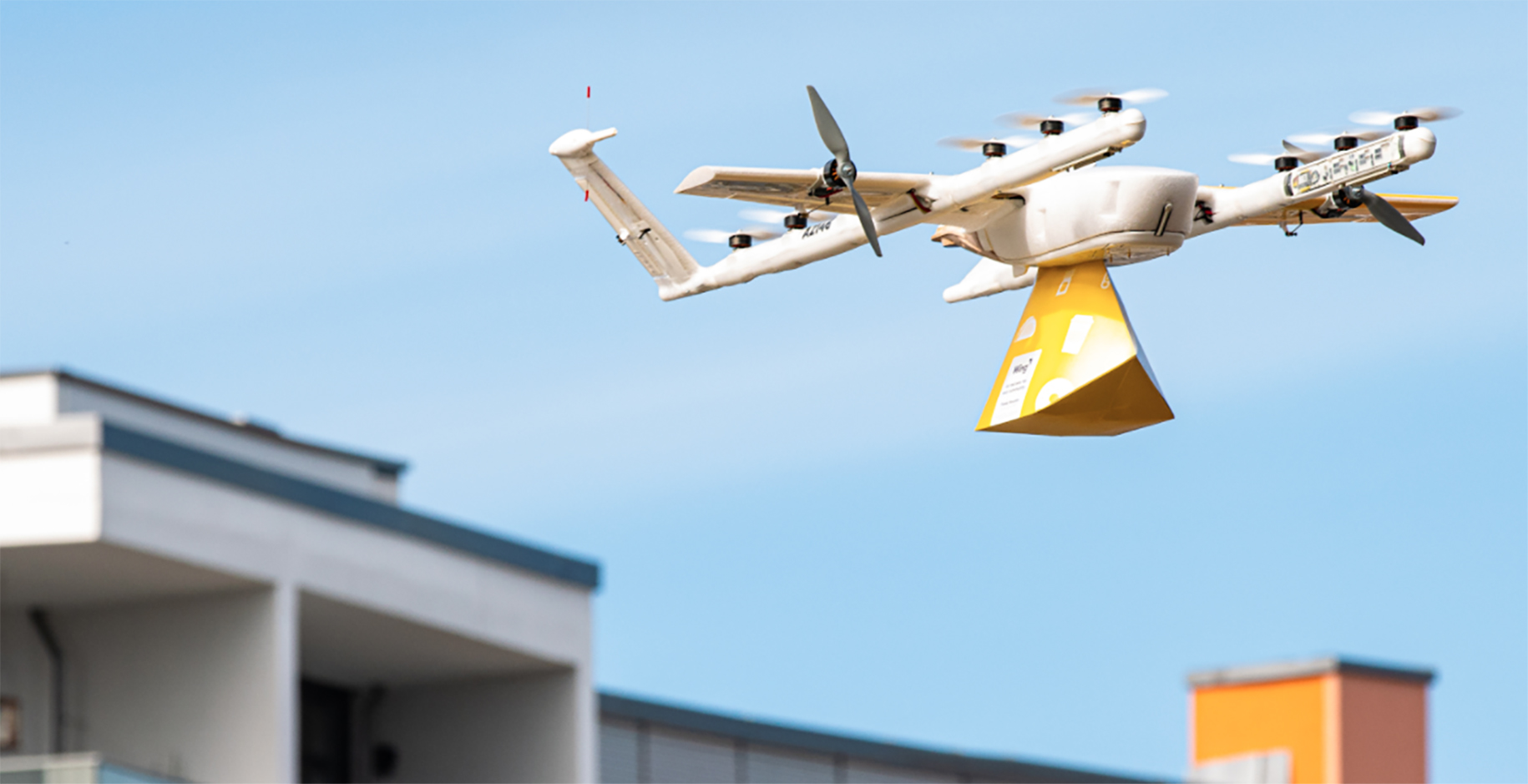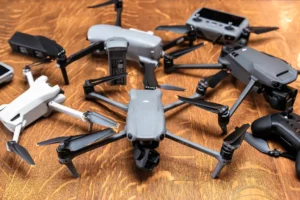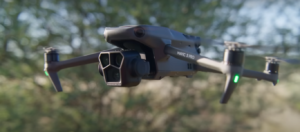In the world of emergency response and rescue operations, the advent of search and rescue drones has marked a significant leap forward in how missions are conducted across the United Kingdom. From the rugged landscapes of the Scottish Highlands to the intricate urban fabric of cities like London, these advanced aerial devices have become indispensable tools. Offering a blend of high-tech capabilities, including extended operational range, sophisticated camera and sensor systems, and unparalleled ease of use, SAR drones are revolutionizing the speed and efficiency with which rescue operations can be executed. This blog post delves into the critical aspects that set these drones apart, assessing their operational range, flight time, camera quality, autonomy, weather resistance, payload capacity, and more, to provide a comprehensive overview of their impact on SAR efforts. Whether you’re involved in emergency response teams, interested in drone technology, or keen on understanding how technology is shaping lifesaving missions, join us as we explore the remarkable world of search and rescue drones.
Table of Contents
Operational Range of Search and Rescue Drones
The operational range of search and rescue drones is a critical factor that determines the effectiveness and efficiency of SAR missions. In the context of the UK, with its diverse landscapes ranging from dense urban areas to remote rural and coastal regions, the ability to cover vast distances without the need for constant manual control is paramount. This capability ensures that search and rescue teams can rapidly locate individuals in distress, even in difficult-to-access areas.
The Importance of Extended Range
For search and rescue operations, the operational range defines how far a drone can fly from its control station while still maintaining a reliable connection and performing its mission effectively. An extended operational range allows drones to cover large search areas more quickly than ground teams or manned aircraft, making them invaluable assets in time-critical search and rescue missions.
Enhancing Search and Rescue Missions Across the UK
The UK’s geographical and climatic diversity poses unique challenges for SAR operations. From the rugged terrains of Scotland’s Highlands to the expansive coastlines surrounding the country, each environment demands a drone with a substantial operational range to ensure comprehensive coverage.
Urban Areas: In cities, drones must navigate around buildings and other structures, requiring advanced navigation systems to maintain a clear signal and ensure operational effectiveness over longer distances.
Rural and Coastal Regions: These areas often lack clear landmarks and can be challenging for ground teams to access quickly. Drones with a long operational range can traverse these vast landscapes efficiently, providing vital information and locating missing persons or vessels in distress.
Key Factors Influencing Operational Range
- Battery Life: The duration a drone can stay airborne directly impacts how far it can travel. Search and rescue drones equipped with high-capacity batteries can offer longer flight times, extending their operational range.
- Signal Transmission: The strength and stability of the drone’s communication system determine its effective control distance. Advanced signal transmission technologies enable drones to operate at greater distances without losing connection.
- Weather Resistance: The UK’s weather can be unpredictable, with conditions that can change rapidly. Drones designed for SAR operations must withstand adverse weather to maintain their operational range.
Real-World Applications
Incorporating drones with extensive operational ranges has proven to be a game-changer for SAR missions in the UK. For instance, drones have been deployed successfully in search operations across remote areas of the Scottish Highlands, where their ability to cover large distances without direct line-of-sight has been crucial.
Conclusion
The operational range is a pivotal aspect of search and rescue drones, directly influencing their ability to perform in diverse and challenging environments. As technology advances, the capabilities of these drones continue to expand, offering new possibilities for SAR teams to save lives efficiently and effectively.
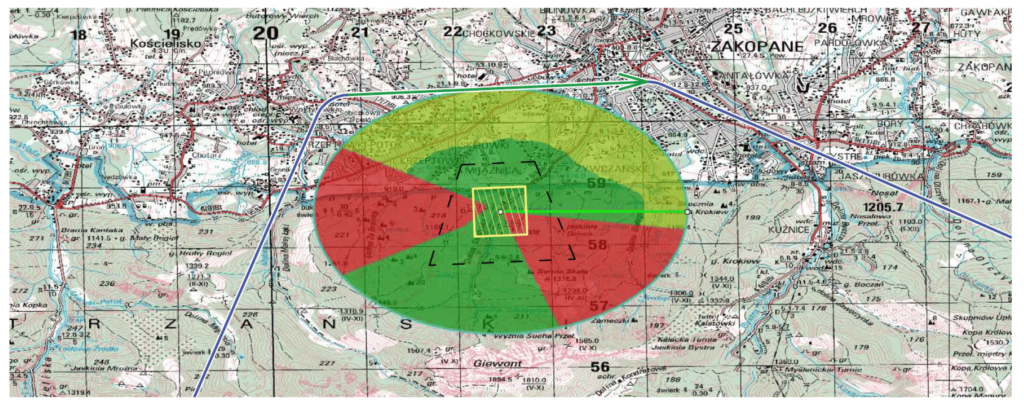
Incorporating these images will not only break up the text for better readability but also provide visual examples of the operational range capabilities of search and rescue drones, making the content more relatable and easier to understand.
Flight Time of Search and Rescue Drones
Flight time stands as a pivotal specification for search and rescue drones, directly influencing their efficacy in operations across the United Kingdom. This measure dictates the duration a drone can remain airborne on a single charge, a crucial factor in the success of SAR missions. With the UK’s varied landscapes, from the bustling streets of London to the remote Scottish isles, maximizing flight time is essential for covering as much ground as possible in search efforts.
The Critical Role of Flight Time in SAR Operations
In search and rescue missions, every minute counts. Longer flight times mean drones can search larger areas, reducing the time it takes to locate missing persons or respond to emergencies. This is particularly vital in the UK, where weather conditions can change rapidly, and access to certain areas may be time-sensitive.
Enhancing Flight Time: A Technological Challenge
Advancements in battery technology and drone design are key to extending flight times. Manufacturers are constantly innovating, seeking new ways to balance drone weight with battery capacity, aerodynamics, and power efficiency.
Battery Innovations: High-capacity lithium-polymer batteries are at the forefront of extending drone flight times. These batteries offer a higher energy density, allowing drones to operate longer.
Efficient Design and Motors: Aerodynamic designs and efficient motors reduce power consumption, enabling drones to fly longer on a single charge. This is particularly beneficial in the UK, where drones must often navigate challenging terrains and weather conditions.
Solar-Assisted Drones: Some cutting-edge drones incorporate solar panels to extend their flight time. While still in the developmental phase, this technology promises to revolutionize the operational capabilities of search and rescue drones by providing renewable energy mid-flight.
Real-World Impact of Extended Flight Times
The benefits of longer flight times have already been realized in numerous SAR operations across the UK. Drones have played critical roles in mountain rescues in Wales, coastal searches along the English Channel, and urban searches in densely populated cities.
Conclusion
Flight time is a fundamental factor determining the effectiveness of search and rescue drones. As technology progresses, the hope is that drones will achieve even longer flight times, further enhancing their role in SAR missions throughout the UK.
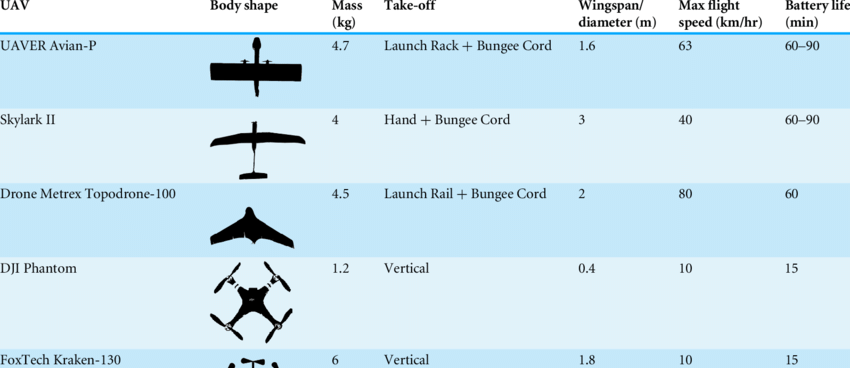
These visuals will not only break up the text, making it more accessible, but also provide concrete examples of the technology and applications discussed, helping readers visualize the importance of flight time in search and rescue drones.
Camera and Sensor Quality in Search and Rescue Drones
In the realm of search and rescue (SAR) operations within the UK, the quality of cameras and sensors on drones plays a pivotal role. The ability to capture clear, detailed images and gather critical data in various environmental conditions can significantly impact the success of SAR missions. This focus on high-quality imaging technology is essential for navigating the diverse landscapes of the UK, from its bustling urban centers to its rugged rural areas and expansive coastlines.
The Crucial Role of Advanced Imaging
For SAR drones, advanced camera and sensor technology is not merely a feature but a necessity. High-resolution cameras, thermal imaging sensors, and night vision capabilities are integral for locating individuals in distress, especially in challenging visibility conditions or in terrain that is difficult or dangerous for ground teams to access.
High-Resolution Cameras: Essential for capturing detailed images from significant heights, allowing SAR teams to scour large areas efficiently. In the dense forests of Wales or the steep cliffs of the Scottish Highlands, the clarity provided by these cameras can make all the difference in spotting a missing person.
Thermal Imaging Sensors: These sensors are invaluable for nighttime searches or in situations where individuals are obscured by foliage or debris. By detecting heat signatures, thermal imaging can reveal the location of people even in total darkness, a common scenario in the longer winter nights of the UK.
Night Vision Capabilities: Enhancing the drone’s effectiveness during low-light conditions, night vision helps in extending operational hours for SAR missions, crucial in the “golden hour” scenarios where every moment counts.
Integration with SAR Operations
Integrating drones equipped with state-of-the-art cameras and sensors into SAR operations has transformed the approach to search missions across the UK. Whether it’s locating stranded hikers in the Lake District or identifying individuals swept out to sea along the coast, the enhanced visibility offered by these technologies significantly increases the chances of a successful rescue.
Legal and Ethical Considerations
It’s important to note that the use of drones for SAR in the UK is subject to strict regulations, particularly regarding privacy and data protection. SAR teams must ensure that drone operations comply with the UK’s legal framework, emphasizing the ethical use of surveillance technology.

These visual elements not only make the content more engaging but also illustrate the practical applications and benefits of high-quality camera and sensor technology in search and rescue drones, bringing the discussion to life for readers.
Conclusion
The camera and sensor quality of search and rescue drones are critical components that directly influence the outcome of SAR missions across the UK. As drone technology continues to evolve, the capabilities of these devices expand, offering new hope and possibilities for saving lives in some of the most challenging conditions and terrains across the country.
Autonomy and AI Features in Search and Rescue Drones
The integration of autonomy and artificial intelligence (AI) features in search and rescue (SAR) drones marks a revolutionary step in the way SAR operations are conducted across the UK. These advanced technologies enable drones to perform complex tasks with minimal human intervention, making SAR missions more efficient, safer, and capable of covering larger areas in less time.
Enhancing SAR Missions with Autonomy
Autonomous flight capabilities allow SAR drones to navigate through challenging terrains, such as the rugged landscapes of the Scottish Highlands or the dense forests of Snowdonia, without constant manual control. This autonomy is crucial for extending the operational capabilities of SAR teams, enabling them to focus on analyzing data and coordinating rescue efforts more effectively.
Pre-programmed Flight Paths: Drones can fly along predetermined routes to scan vast areas, ensuring thorough coverage and optimizing search patterns over land or sea.
Obstacle Avoidance: Advanced sensors enable drones to detect and navigate around obstacles, crucial for safe operation in complex environments like urban ruins or cliff faces.
Automated Takeoff and Landing: These features reduce the risk of human error and ensure drones can be deployed quickly, a critical factor in time-sensitive SAR missions.
The Role of AI in SAR Operations
AI technologies take the capabilities of SAR drones to the next level, offering intelligent analysis and decision-making that can dramatically increase the chances of finding missing persons or objects.
Person Detection and Tracking: AI algorithms can identify human shapes and movements from the drone’s video feed, even in crowded or complex scenes. This is particularly useful in areas like beaches or national parks, where distinguishing a person in distress from the surroundings can be challenging.
Thermal Image Analysis: AI can analyze thermal imaging data to detect heat signatures of humans or animals, invaluable during night searches or in situations where individuals are obscured.
Data Analysis for Pattern Recognition: AI can sift through vast amounts of data to identify patterns or anomalies that may indicate a person’s location, such as recognising signs of recent human activity in wilderness areas.
Legal and Ethical Considerations
As with all drone operations, incorporating AI and autonomous features into SAR drones in the UK must adhere to regulations and ethical guidelines. These ensure that the use of such technology respects privacy rights and data protection laws, maintaining public trust in SAR operations.
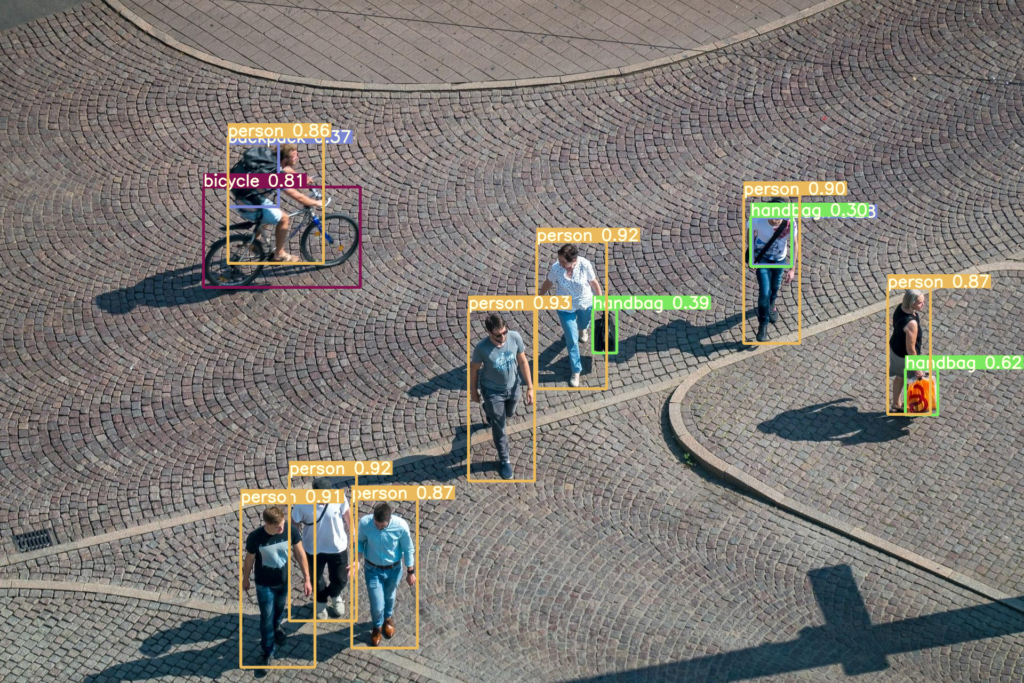
These visuals will not only break up the text but also provide concrete examples of how autonomy and AI features are being used in SAR drones, making the topic more accessible and understandable.
Conclusion
The integration of autonomy and AI features into SAR drones represents a significant advancement in search and rescue operations across the UK. By enhancing the drones’ capabilities to operate independently and analyze data intelligently, SAR teams are better equipped to locate and assist individuals in need, regardless of the terrain or conditions. As these technologies continue to evolve, the future of SAR operations looks increasingly efficient, safe, and effective.
Weather and Environmental Resistance in Search and Rescue Drones
In the United Kingdom, where the weather can range from sunlit days to sudden downpours and foggy conditions, the weather and environmental resistance of search and rescue (SAR) drones is crucial. These drones are deployed in a variety of missions across the country, from the gusty Scottish Highlands to the rainy Lake District and the coastal breezes of Cornwall. Therefore, their ability to operate in diverse and often adverse weather conditions significantly impacts the effectiveness of SAR operations.
Importance of Weather Resistance
SAR drones must be equipped to handle the unpredictable UK weather to ensure they can always be deployed when needed. This means having the resilience to withstand heavy rains, strong winds, and even snow, which are not uncommon across different regions of the UK.
Rain and Moisture Resistance: Drones used in SAR operations must have a high level of waterproofing, ensuring that they can operate during heavy rainfall, a common scenario in many parts of the UK.
Wind Resistance: The ability to maintain stability and control in high winds allows drones to be deployed in open areas and during stormy conditions, which is essential for coastal and mountainous rescues.
Temperature Tolerance: SAR drones should operate efficiently across a wide range of temperatures, from the cold peaks of Snowdonia to the warmer climates of southern England.
Enhancing SAR Capabilities with Environmental Adaptability
Drones that can withstand harsh weather conditions are invaluable to SAR teams, allowing for quicker response times and safer operations. They enable teams to conduct searches and deliver aid in conditions that might ground other forms of help or put human rescuers at risk.
Extended Operational Windows: Weather-resistant drones can operate in conditions that would typically limit search efforts, such as fog, rain, or snow, thus extending the operational window for SAR missions.
Diverse Mission Environments: The UK’s varied landscape requires drones that can adapt to different environments, from coastal areas affected by saltwater to urban settings where debris and pollution may be factors.
Legal and Operational Considerations
Operating SAR drones in adverse weather also brings a set of legal and safety considerations. Drone pilots must be trained to handle these conditions and understand the limitations of their equipment. Additionally, compliance with UK aviation regulations, especially regarding visibility and control, is mandatory.
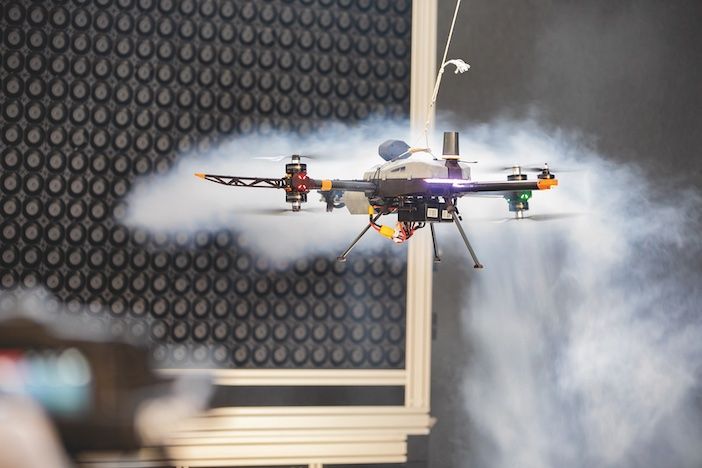
These visuals would not only make the content more engaging but also provide concrete examples of how weather and environmental resistance are critical to the success of SAR operations in the UK.
Conclusion
Weather and environmental resistance are fundamental features for search and rescue drones operating in the UK. The ability to withstand the nation’s unpredictable and often harsh weather conditions not only enhances the efficiency of SAR missions but also ensures that help can be delivered when and where it’s most needed. As drone technology continues to advance, the development of more robust and weather-resistant SAR drones will remain a priority, further strengthening the UK’s capacity to respond to emergencies across its varied landscapes.
Payload Capacity of Search and Rescue Drones
In the realm of search and rescue (SAR) operations across the United Kingdom, the payload capacity of drones emerges as a critical feature. The ability to carry essential equipment, ranging from medical supplies to thermal imaging cameras and communication tools, can significantly influence the outcome of SAR missions. Whether navigating the rugged terrains of the Scottish Highlands, the expansive rural areas of Wales, or the coastal regions of England, SAR drones with adequate payload capacities are indispensable assets for emergency response teams.
The Significance of Payload Capacity
The payload capacity of a drone determines what it can carry, directly impacting its versatility and effectiveness in various SAR scenarios. For SAR operations, this not only includes sophisticated cameras and sensors for locating individuals but also the ability to transport life-saving equipment directly to them.
Medical Supplies Delivery: In critical situations where immediate medical attention is needed, drones can deliver first aid kits, medications, or even automated external defibrillators (AEDs) to victims before human rescuers can reach the scene.
Advanced Imaging Tools: High payload capacities allow drones to be equipped with advanced imaging systems, including thermal and night vision cameras, crucial for operations in challenging visibility or at night.
Communication Devices: In areas with poor signal reception, drones can carry mobile communication devices to establish a temporary communication link between victims and SAR teams.
Enhancing SAR Operations in the UK
Given the UK’s diverse landscapes and weather conditions, the payload capacity of SAR drones plays a pivotal role in ensuring that SAR missions are as effective and efficient as possible.
Versatility in Diverse Environments: The UK’s varied geography, from its dense forests and mountain ranges to urban and coastal areas, requires SAR drones that can adapt to different missions by carrying specific payloads.
Rapid Response Capability: The ability to quickly deliver essential supplies or establish communication channels can be life-saving, particularly in remote or hard-to-access locations where traditional rescue methods may face delays.
Legal and Safety Considerations
Operating drones with significant payload capacities requires adherence to the UK’s Civil Aviation Authority (CAA) regulations, ensuring safe and responsible use. SAR teams must consider the drone’s weight, including its payload, to comply with legal flight limitations and ensure safe operation, especially in populated or sensitive areas.

These images will not only illustrate the critical role of payload capacity in enhancing the capabilities of SAR drones but also provide readers with a clear, visual understanding of the practical applications of this feature in real-world rescue scenarios.
Conclusion
The payload capacity of search and rescue drones is a fundamental aspect that significantly enhances the scope and success of SAR missions throughout the United Kingdom. By enabling drones to carry essential life-saving equipment and advanced technology, SAR teams can respond more effectively to emergencies, ultimately saving more lives. As drone technology continues to evolve, the potential for increasing payload capacities promises to further revolutionize SAR operations, making them more versatile and impactful.
Ease of Use and Deployment Speed of Search and Rescue Drones
In the fast-paced and often critical context of search and rescue (SAR) operations throughout the United Kingdom, the ease of use and deployment speed of drones can be decisive factors in saving lives. From the dramatic cliffs of the Cornish coast to the sprawling urban landscapes of London, SAR drones must be quickly deployable and user-friendly to ensure immediate and effective response to emergencies.
The Impact of Ease of Use
Ease of use pertains to how user-friendly the drone’s operational systems are, including its interface, control mechanisms, and the simplicity of initiating SAR missions. For volunteer rescuers and professionals alike, the ability to swiftly understand and utilize drone technology is crucial, especially under the stress of emergency situations.
Intuitive Controls: SAR drones with intuitive control systems allow operators, regardless of their experience level, to effectively pilot the drone and utilize its SAR capabilities to the fullest.
Automated Flight Modes: Features like automated takeoff, landing, and predefined search patterns reduce the workload on operators, allowing them to focus more on analyzing the data collected during the search.
User Training and Support: Access to thorough training materials and support ensures that SAR teams can quickly become proficient in operating new drone technology.
The Importance of Deployment Speed
Deployment speed refers to how quickly a drone can be ready to fly from the moment it is needed. In SAR operations, where time is of the essence, rapid deployment can mean the difference between life and death.
Quick Setup: SAR drones designed for rapid assembly and setup enable teams to commence search operations with minimal delays.
Portability: Lightweight and compact drones that are easily transportable can be quickly brought to different locations, an essential feature for responding to incidents across varied terrains of the UK.
Reliability: Drones that can be consistently deployed in various environmental conditions without extensive pre-flight preparations ensure that SAR teams can rely on their technology when it matters most.
Legal and Operational Framework
In the UK, the ease of use and deployment speed of SAR drones must align with the Civil Aviation Authority (CAA) regulations, ensuring that rapid deployment does not compromise safety and privacy laws. Compliance with these guidelines ensures that drones can be utilized effectively and legally in SAR operations.
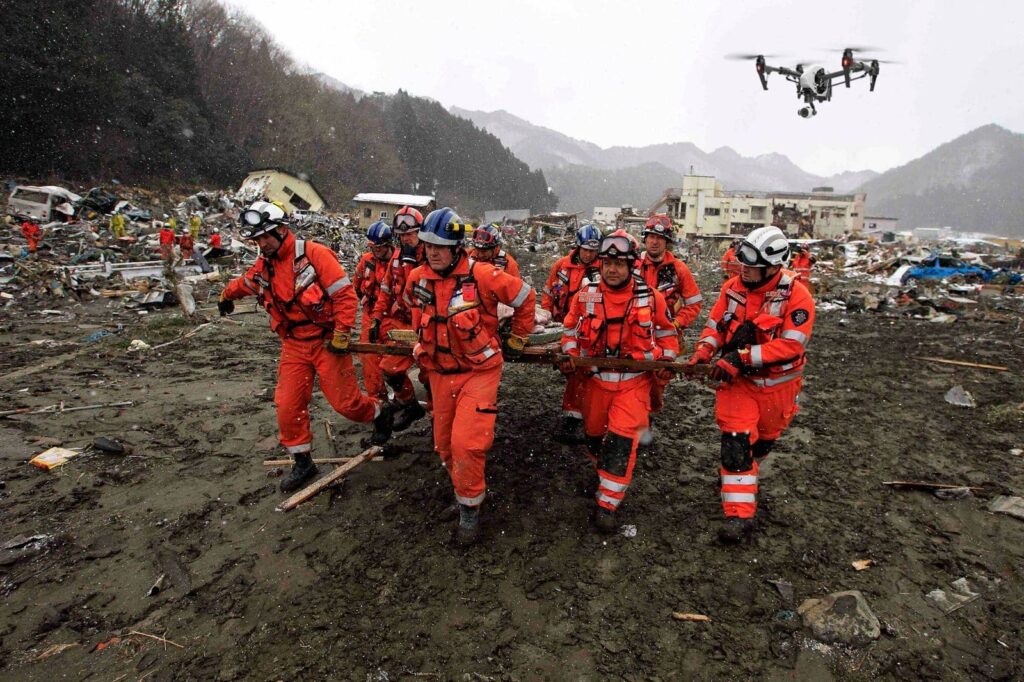
These visuals will not only make the content more engaging but also provide clear, concrete examples of how ease of use and deployment speed are critical in the context of SAR operations, offering readers a visual understanding of these concepts in action.
Conclusion
The ease of use and deployment speed of search and rescue drones are pivotal in the efficient and effective execution of SAR operations across the UK. By ensuring that drones can be quickly deployed and easily operated, SAR teams are better equipped to respond to emergencies, maximizing the potential for positive outcomes. As drone technology continues to evolve, focusing on these aspects will remain essential for enhancing the capabilities of SAR operations, ultimately leading to more lives saved in critical situations.
Reliability and Durability of Search and Rescue Drones
In the demanding field of search and rescue (SAR) operations within the United Kingdom, the reliability and durability of drones play a critical role. The UK’s varied climate and terrain, from the rainy highlands of Scotland to the rugged coastlines of Wales and urban expanses like London, demand SAR drones that can withstand challenging conditions and deliver consistent performance. The success of missions often depends on these key factors, making them essential for the drones deployed in life-saving roles.
The Essence of Reliability in SAR Operations
Reliability in SAR drones refers to their ability to perform as expected, every time, without failure. This is crucial in emergency situations where every second counts and the window for successful intervention is narrow.
Consistent Performance: SAR drones must maintain a high level of performance across all missions, ensuring that they can navigate, transmit data, and carry payloads as required, without unexpected failures.
Fault Tolerance: The best SAR drones are designed with redundancy in critical systems such as propulsion and navigation, ensuring that they can continue to operate even if one component fails.
Software Stability: Reliable drones also depend on stable and secure software that can efficiently process data and execute commands without glitches or crashes.
Durability Across Diverse UK Environments
Durability addresses a drone’s ability to withstand physical stress, wear, and environmental conditions over time. For SAR operations across the UK’s diverse environments, drones must be robust enough to handle everything from sea spray and sand to dense vegetation and urban debris.
Weatherproofing: Effective waterproofing and resistance to both high and low temperatures enable drones to operate in the UK’s unpredictable weather, from sudden rain showers to frosty mornings.
Impact Resistance: Durable drones can withstand minor collisions with obstacles like trees or buildings, a common risk in complex search environments.
Longevity: The materials and build quality of SAR drones should ensure a long operational life, withstanding the rigors of frequent deployment in challenging conditions.
Legal and Safety Standards
Ensuring reliability and durability also means adhering to UK’s Civil Aviation Authority (CAA) standards and safety regulations. Drones used in SAR must not only be capable of performing under pressure but also safe for both operators and the public.

These visuals not only break up the text for more accessible reading but also provide tangible examples of reliability and durability, helping readers to visualize the drones’ capabilities in real-life SAR scenarios.
Conclusion
The reliability and durability of search and rescue drones are foundational to their effectiveness in SAR operations throughout the UK. With the potential to save lives hanging in the balance, it is imperative that these drones are able to perform consistently and withstand the diverse and challenging environments of the UK. As technology advances, the focus on enhancing these aspects of SAR drones will continue to be paramount, ensuring that they remain indispensable tools in the mission to save lives and protect the public.
Communication Systems in Search and Rescue Drones
In the context of search and rescue (SAR) operations throughout the United Kingdom, the sophistication of communication systems within SAR drones stands as a cornerstone of their effectiveness. The UK’s varied landscapes, from the remote Scottish Isles to the bustling streets of London, necessitate reliable and clear communication channels between drones, their operators, and the broader SAR team. The ability to transmit real-time data, video feeds, and even verbal communications can significantly enhance the efficiency and success rates of SAR missions.
The Role of Advanced Communication Systems
Real-time Data Transmission: Essential for the immediate analysis of search areas, real-time data transmission allows SAR teams to make informed decisions quickly, leveraging live video feeds and sensor data to locate individuals in distress.
Remote Operation Capabilities: Advanced communication systems enable drones to be operated from a distance, essential for covering vast areas or regions that are difficult to access due to rough terrain or hazardous conditions.
Integration with SAR Teams: Effective communication systems ensure seamless integration with existing SAR protocols and equipment, enabling coordinated efforts that combine aerial drone searches with ground or maritime operations.
Enhancing SAR Missions Across Diverse UK Environments
Given the UK’s geographical diversity, drones equipped with robust communication systems are invaluable. They enable operations under various conditions, whether it’s coordinating a mountain rescue in the Brecon Beacons or a coastal search along the cliffs of Dover.
Urban Environments: In cities, where high buildings can interfere with signals, drones require strong communication systems to maintain connectivity with their operators and relay crucial information back to the SAR command center.
Rural and Remote Areas: In locations where mobile network coverage may be unreliable or nonexistent, drones with independent communication systems can be a lifeline, providing a means to communicate over long distances.
Maritime Operations: For SAR missions at sea, drones equipped with communication systems that can withstand saltwater exposure and transmit over large expanses of water are critical for the timely rescue of individuals in distress.
Legal and Operational Considerations
The use of drones in SAR operations within the UK is subject to regulations set forth by the Civil Aviation Authority (CAA), including those pertaining to the use of communication frequencies and the protection of personal data transmitted during operations. Ensuring compliance with these regulations is paramount for the legal and ethical use of drones in SAR missions.

These visuals will not only make the content more engaging but will also provide readers with a clearer understanding of how advanced communication systems are implemented in SAR drones and the crucial role they play in the success of missions across the UK.
Conclusion
The communication systems embedded in search and rescue drones are pivotal in executing effective SAR operations across the United Kingdom. From the highlands to the coastlines, ensuring that drones can communicate reliably with their operators and the wider SAR team is essential for the rapid and successful conclusion of rescue missions. As drone technology evolves, the development and refinement of these communication systems will continue to play a critical role in enhancing the capabilities of SAR drones, making them an even more indispensable asset in the mission to save lives.
Cost and Value for Money of Search and Rescue Drones
In the context of search and rescue (SAR) operations within the United Kingdom, evaluating the cost and value for money of SAR drones is essential. As these drones become increasingly integral to emergency response strategies across varied landscapes—from the rugged terrains of the Scottish Highlands to the urban sprawl of cities like Manchester and Birmingham—it’s crucial for SAR teams and supporting organizations to make informed investments. This means balancing the initial purchase price, operational costs, and maintenance against the drones’ effectiveness, durability, and overall contribution to saving lives.
Understanding the Costs
Initial Purchase Price: SAR drones vary widely in price, depending on their capabilities, such as flight time, payload capacity, and the sophistication of their communication systems and sensors. High-end models equipped with advanced features like thermal imaging and autonomous flight capabilities can command premium prices.
Operational Costs: These include expenses related to training personnel, deploying the drones, and the day-to-day running of SAR operations. Operational efficiency and the ease of use of the drones can significantly affect these costs.
Maintenance and Upkeep: Durable, high-quality drones typically require less frequent repairs and can withstand the demanding conditions of SAR missions, potentially reducing long-term maintenance costs.
Evaluating Value for Money
Investing in SAR drones involves more than just considering the sticker price. The value for money of these drones is also measured by their impact on SAR operations, including:
Enhanced Search Capabilities: Drones that can cover large areas quickly or provide real-time video feeds offer substantial value by increasing the chances of successful rescues.
Operational Efficiency: Drones that are easy to deploy and operate can reduce the time and manpower needed for searches, offering better value in the long run.
Versatility: Drones equipped to handle a variety of missions, from urban searches to offshore rescues, provide greater value by serving multiple needs within SAR operations.
The UK Perspective
In the UK, where SAR operations can vary significantly due to the country’s diverse geography and weather conditions, the value for money of drones also includes their adaptability and reliability in different environments. The cost-effectiveness of drones in the UK context also extends to their ability to complement existing SAR resources, providing aerial perspectives that can enhance the effectiveness of ground-based teams.
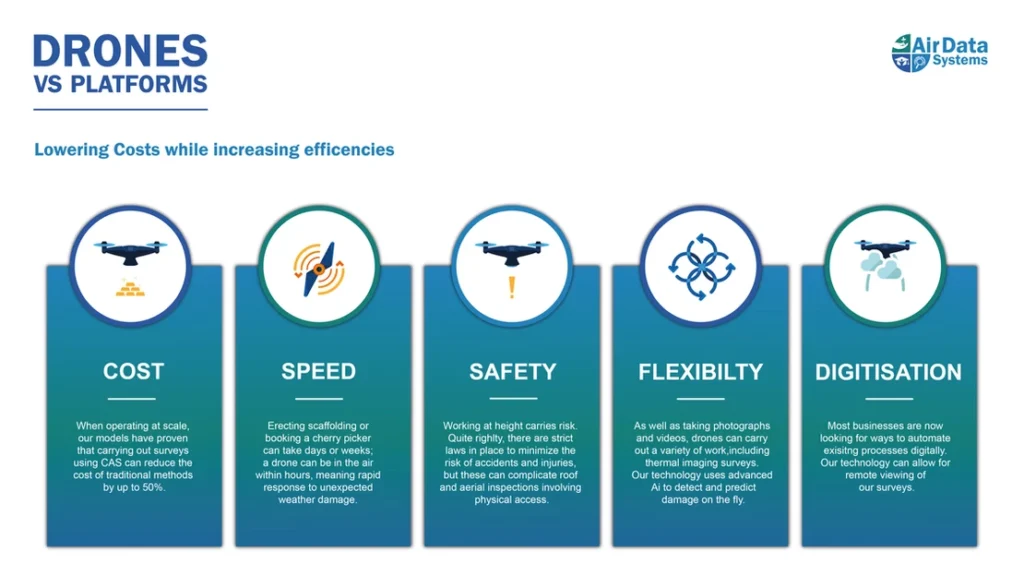
These visuals will help to break down complex considerations into more understandable comparisons and stories, providing SAR teams, funders, and the public with a clear sense of the tangible benefits that drones bring to SAR efforts in terms of both cost and value.
Conclusion
When evaluating the cost and value for money of search and rescue drones, it’s clear that the decision goes beyond initial investments to consider the broader impact on SAR operations. In the UK, where the demands on SAR services are as varied as the landscape, choosing the right drones involves a careful consideration of how their features, capabilities, and costs align with the specific needs of SAR teams. Ultimately, the value of SAR drones is measured in their contribution to saving lives, making their cost-effectiveness a vital component of emergency response planning and execution.
Conclusion: The Lifesaving Impact of Search and Rescue Drones
As we’ve explored the multifaceted aspects of search and rescue (SAR) drones—from their operational range and flight time to the sophistication of their cameras, sensors, autonomy, and AI features, through to their weather resistance, payload capacity, ease of use, reliability, communication systems, and cost-effectiveness—it’s evident that these technologies have become indispensable in the realm of SAR operations across the United Kingdom.
The integration of SAR drones has undeniably transformed emergency response strategies, offering unprecedented capabilities that enhance the efficiency, safety, and effectiveness of SAR missions. Whether navigating the challenging terrains of rural landscapes, responding to incidents in dense urban environments, or coordinating rescues in the UK’s vast maritime areas, drones have proven their worth as vital tools in the SAR arsenal.
The Value Beyond Cost
While considerations of cost and value for money are crucial in the deployment of SAR drones, their true worth is measured in the lives saved and the impact on communities across the UK. The ability of SAR drones to extend the reach of rescue teams, reduce response times, and provide critical information in real-time has not only improved operational outcomes but has also offered hope in moments of despair.
Looking to the Future
As technology continues to advance, the potential for SAR drones is boundless. With ongoing innovations in drone capabilities, coupled with a commitment to training and regulatory compliance, the future of SAR operations looks increasingly dynamic. The evolution of drones promises even greater contributions to public safety, solidifying their role as essential instruments in the lifesaving efforts of SAR teams nationwide.
A Call to Action
For SAR teams, emergency response coordinators, and the broader community, the message is clear: embracing and investing in SAR drone technology is not just about enhancing operational capabilities; it’s about reaffirming our collective commitment to saving lives and protecting the vulnerable. As we look ahead, the continued support, development, and integration of SAR drones will undoubtedly play a pivotal role in shaping the future of emergency response in the UK and beyond.
In conclusion, as we reflect on the advancements and potential of search and rescue drones, let us also recognize the dedication of the SAR teams who deploy these technologies in their noble quest to save lives. Together, with innovation and courage, we move forward into a future where the skies offer not just a bird’s eye view, but a lifeline to those in need.

As we conclude this exploration of SAR drones, let’s celebrate the technological strides made while looking forward to the innovations and successes yet to come in the field of search and rescue.

